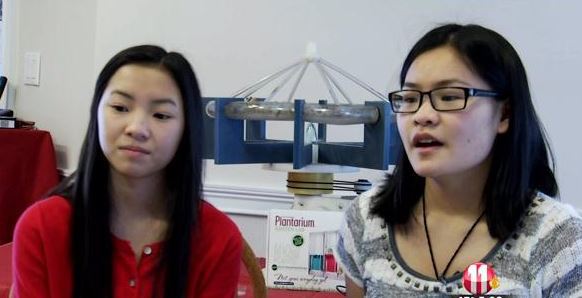
In early 2013 we attended the Conrad Spirit of Innovation Challenge at Johnson Space Center in Houston where the girls presented their design to a large crowd. In their presentation they mentioned that their ultimate dream would be to redesign their plant growth chamber to the specifications required by the International Space Station. A contest judge helped us connect with them later at the event where we discussed going forward with the project. We explained that they would have to redesign the “table-top” machine in a NanoLab, which is a 10×10 cm cube. We knew that would not be easy, but the girls were not intimidated. They spent a few months conceptualizing their redesign and showing it to the Chief Designer of NanoRacks, Michael Johnson. During this time there were a lot of emails going back and forth, and some skype calls. They came up with an extremely creative 4 cylinder centrifuge that we are most impressed with. The science behind the idea is also interesting—that plants might be heartier if primed by centripetal forces.
What is necessary is a robust machine which can withstand a bumpy launch, yet is within the weight allowance; it must use components that are not too heavy. To work around this students are very creative and make every centimeter count—and they are doing quality science! In the case of The Garden of ETON—this is a test of a new process. If successful, then the technology can be used towards a bigger and more powerful growth chamber than can grow a small garden of edible plants.
Growing plants in microgravity is very tricky. The stem and root don’t always grow in opposite directions like on earth. Water also doesn’t behave like it does in gravity, so it’s not easy to hydrate the plant. Root rot is also a consideration because the water doesn’t drain downward and outward like we are used to. The Chicks in Space followed Astronaut Don Pettite’s blog in which he described the caveats of his own attempts at space gardening, and so they knew the challenges and have designed their machine accordingly.
With NASA and other entities investing in missions to Mars, a renewable food source will be in high-demand, but developing the means for plant growth takes takes some trial and error. The NanoRacks platform on the ISS is the perfect place for such testing.
